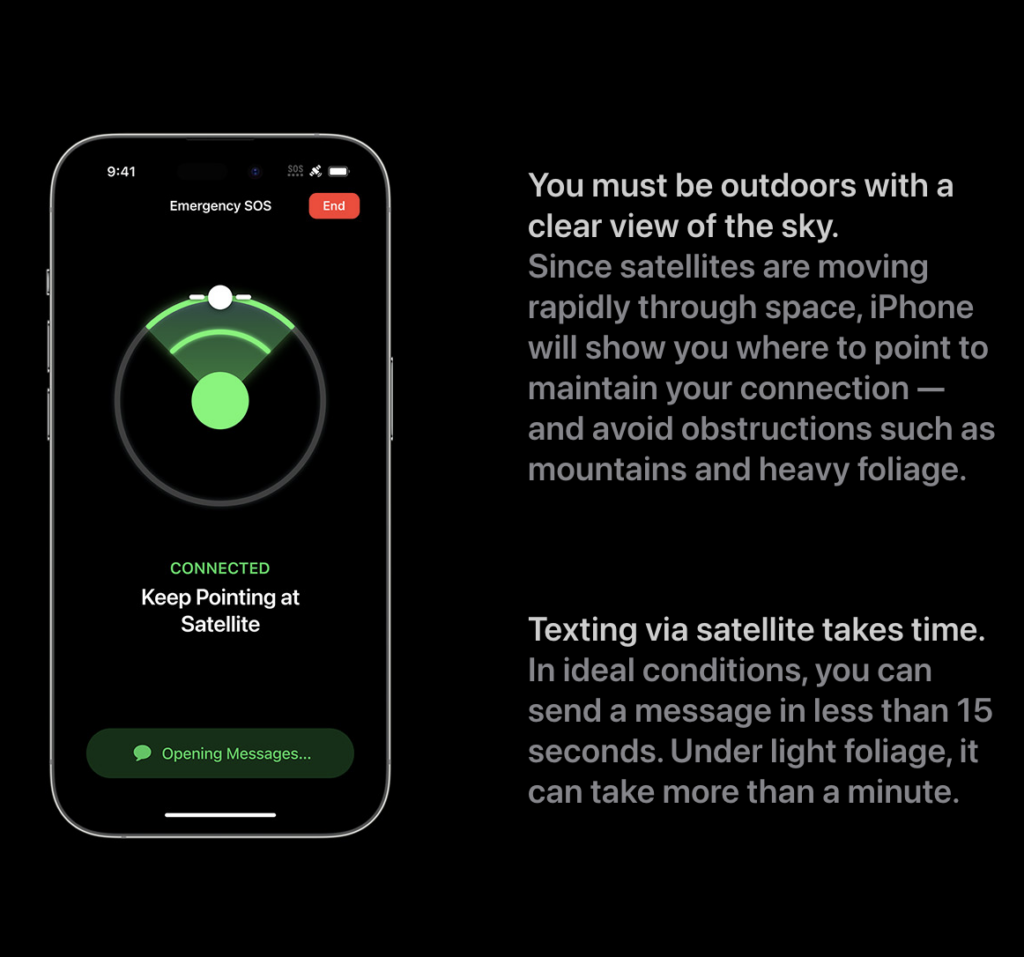The Major Problem With iPhone 14’s Satellite Communication Safety Feature
The iPhone 14's new satellite communication feature has a lot of safety advantages for adventurers who frequently go off-grid, however, experts worry that individuals will become too reliant on a feature that may not always work as intended.
This article is more than 2 years old
The iPhone 14 was recently released amid a fanfare of celebration and anticipation (much like all Apple product releases are). Many people guessed at the new features and upgrades and a lot were quick to report the many bugs that were already in the software, and now, many are citing concerns related to the phone’s new satellite communication safety feature.
Whenever a new Apple product comes out, even fans complain. It seems as though we are all entirely too used to having access to the world’s library in the shape of a phone. Images can be sent to your friend before you can say cheese, the best routes to get home are chosen, and any podcast or music that you desire is there–within your hand.
Hater’s Gonna Hate
If there isn’t something incredibly mind-blowing that is about to debut, haters, well, hate. The iPhone 14 does bring something new to the table (which is fairly hard to do at this point). So, imagine the world’s excitement when something seemingly unheard of was “invented.”

The new iPhone comes with one main safety feature that can save thousands of people through satellite technology. The iPhone 14 can send short messages where cellular service is nonexistent. Adventure seekers and outdoorsmen worldwide can feel safe knowing they can send for help at any time! Really? Well, it’s not that simple.
According to Digital Trends, the iPhone 14 may be able to send “911” calls, but it does have a lot of limitations. While the satellite technology can locate an individual, it may not work quickly, or if the call is coming from underground or in a place that has dense foliage. The technology does have its limitations and experts are concerned people will rely on it a bit too much.
Sometimes Help Is Not On The Way
The emergency SOS feature helps connect users with those who are outside of the realm of WiFi or even cellular coverage. So, theoretically, if someone is lost in the backwoods of Appalachia, they can be found. Well, not so fast.
Those looking for adventure in the great outdoors and tourists who like to travel outside of their comfort zone can be lured into a false sense of security, say, critics. Relying on technology to help, when a message isn’t even getting sent may do more harm than good.
As people venture further and further away from their homes and choose to “seize the day” after being kept inside for more than two years, folks may not know their limits. We’ve gotten so used to relying on technology doing “miraculous” things, that it’s not a far cry to think they can get victims out of a hapless situation.
Best Practices Are Best
So, the danger lies inside people and the trust they have for Apple and the iPhone 14. We need to remember that technology is not magic and sometimes, just like anything, technology doesn’t work. What does, however, is common sense, preparedness, and following best practices.
Whether or not you have your iPhone 14 with you, make sure at least one person knows where you are at all times. It’s simple, it doesn’t depend on technology, and it can save your life.




